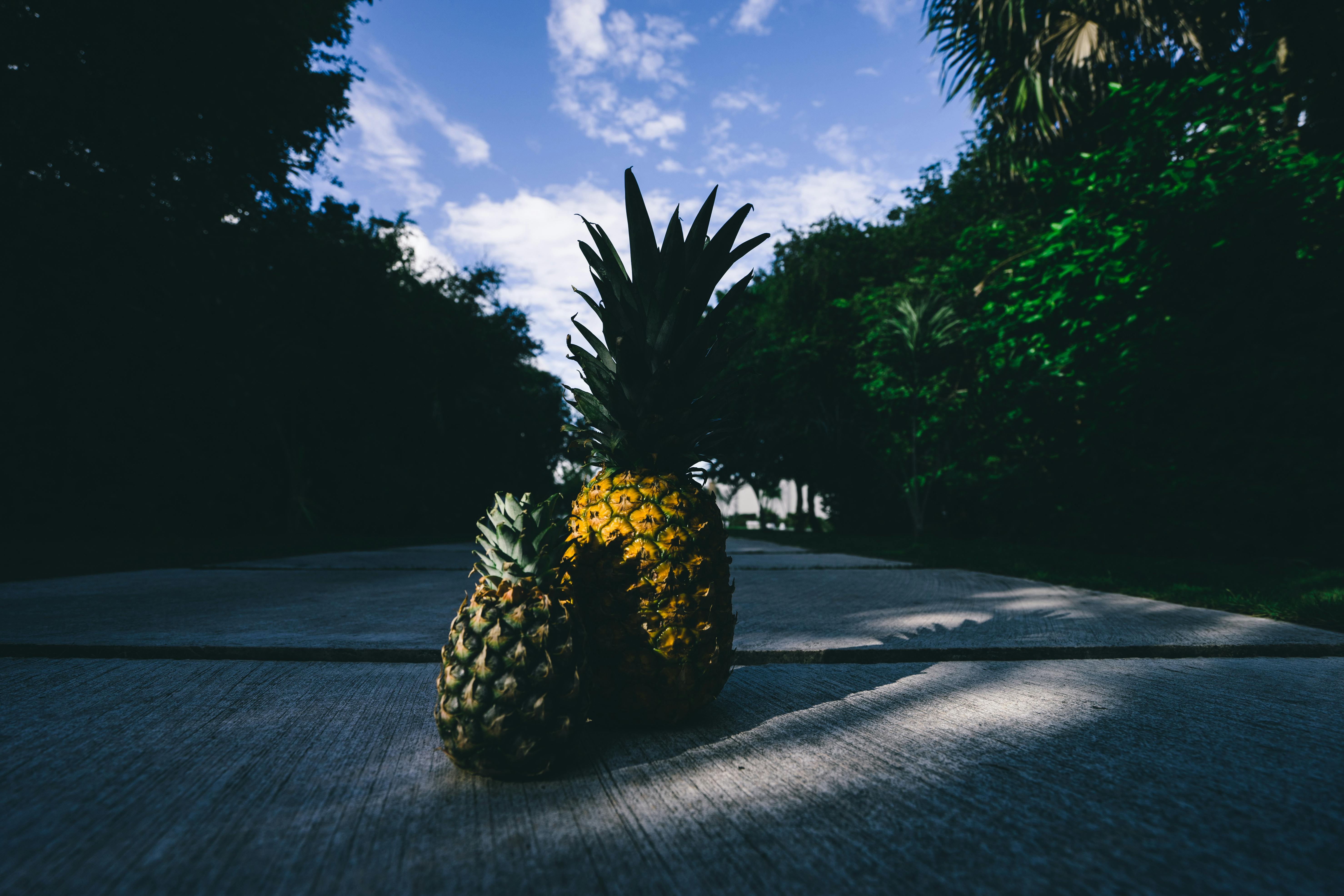Fruit trees are a great addition to any yard or garden. They provide beauty, shade, and delicious fruits too! But in order to keep them healthy and productive, they need the right amount of water. So how much water do fruit trees need per week? This article will explain the basics of proper watering for fruit trees and provide tips on how to make sure your tree is getting the right amount of water.Fruit trees typically need 1 to 2 inches of water per week, depending on the weather and soil type. If rainfall does not provide this amount, water your trees once a week with enough water to soak the soil to a depth of 6 to 10 inches. Water the tree slowly so that the roots have time to absorb the moisture.
Factors Affecting Water Requirements for Fruit Trees
Water is essential for healthy fruit tree growth, and various factors can affect how much water trees need. Climate, soil type and tree size all play a role in determining how much water a fruit tree will require. In climates that experience periods of hot, dry weather, more frequent watering may be necessary to ensure that fruit trees have enough water. Similarly, sandy soils require more frequent irrigation than heavier loam soils because they are less able to retain moisture. Finally, larger trees require more water than smaller trees because of their greater surface area and root system.
In addition to climate, soil type and size, other environmental factors can influence the amount of irrigation necessary for a fruit tree to remain healthy. Trees planted in sunnier locations will need more water than those planted in shadier spots due to increased evaporation from the soil surface. Windy conditions also accelerate evaporation from the soil surface and should be taken into consideration when determining how often to irrigate a tree. Lastly, mulching around the base of a tree helps reduce evaporation by providing an insulating layer over the soil surface and should be done when possible.
Ultimately, it’s important to monitor your individual trees closely to ensure they are receiving enough water for optimal health. If your trees appear stressed during periods of hot or dry weather, it may be necessary to increase watering frequency or duration until conditions improve. By understanding the various factors that can affect a fruit tree’s water requirements, you can provide your trees with the irrigation they need for optimum health and maximum yield.
Benefits of Proper Watering for Fruit Trees
Proper watering is essential for healthy fruit trees. Regular watering helps to maintain the health of leaves, twigs, branches, and fruit. It also encourages the growth of new foliage and assists with flowering and fruiting. Without adequate water, a tree cannot reach its potential in terms of productivity and yield. Here are some benefits of proper watering for fruit trees:
One advantage of regular watering is that it helps to improve the soil structure around the tree’s roots. This contributes to better root growth and development, which leads to stronger and healthier trees. Watering also helps to protect against drought conditions that can damage a tree’s leaves or fruits. Additionally, it can help prevent disease by washing away any harmful fungi or bacteria that may be present on the leaves or stems.
Water also helps to ensure that a tree produces quality fruits. Proper water levels help keep fruits plump and juicy by maintaining their natural moisture levels. Furthermore, water helps to encourage flowering and subsequent fruit production by providing necessary nutrients for healthy blooms.
Lastly, regular watering helps to reduce stress on a tree during periods of extreme temperatures. When temperatures drop below freezing or rise above a certain point, it can cause a significant amount of stress on the tree’s system which can lead to stunted growth or even death in some cases. By providing adequate water during these periods, you can help reduce the chances of this happening.
In conclusion, proper watering is essential for healthy fruit trees as it contributes to better root growth and development, protects against drought conditions, ensures quality fruits are produced, and reduces stress on the tree during extreme temperatures.
Estimating the Amount of Water Needed for Your Fruit Tree
Water is an essential part of a healthy fruit tree. Without an adequate amount of water, a fruit tree’s leaves will become dry and its fruit will be small and unappetizing. Estimating the amount of water your tree needs can be tricky, but with the right information, you can ensure your fruit tree gets the water it needs.
The first step in estimating the amount of water needed for your fruit tree is to determine how much precipitation is received in your area. This can be done by looking at local rainfall records or consulting with a local weather service. Once you know how much precipitation is received in your area, you can calculate how much additional water your tree needs to remain healthy.
Another factor to consider when estimating the amount of water needed for your fruit tree is soil type. Different soil types will absorb different amounts of water, so it’s important to determine what type of soil you have before making any estimates. Sandy soils will need more frequent watering than loam or clay soils as they are more prone to drought conditions.
When it comes time to actually watering your fruit tree, it’s important to remember that deep, infrequent watering is best for most trees. It’s better to give your tree one deep watering once or twice a week than numerous shallow ones throughout the week as this encourages strong root growth and prevents shallow root systems from forming which can lead to poor health and disease susceptibility in trees.
Finally, if you’re unsure about how much water your fruit tree needs or if you have any other questions about caring for it, don’t hesitate to consult with a professional arborist or horticulturalist who can provide expert advice tailored specifically for your situation. With their help and guidance, you can ensure that your fruit tree receives the proper care and attention it needs to stay healthy and productive throughout its life.
Measuring Soil Moisture for Your Fruit Tree
Knowing how much moisture is in your soil can help you determine when to water your fruit tree. This is especially important in areas where the climate is dry and water is scarce. To measure soil moisture, you’ll need a soil moisture probe or meter. These tools measure the electrical conductivity of the soil, which tells you how much water is present in the soil.
Before you begin, make sure that the soil is free of any debris like leaves or twigs. Then use the probe to take a sample from several different places around the tree. Place the probe tip into the ground and press firmly until it’s about two inches deep. Then check your meter’s reading and record it for each test location.
The meter will give you a reading on a scale from 0-10, with 0 being no moisture and 10 being saturated with moisture. If your readings are below 6, then it’s time to water your tree. Be careful not to over-water though; too much water can be just as damaging to a tree as too little water!

Signs of Underwatering in a Fruit Tree
Underwatering a fruit tree can lead to a variety of problems, from stunted growth to poor fruit production. It is important for tree owners to recognize the signs of underwatering so that they can take corrective action. The most common signs of underwatering include wilting leaves, yellowing leaves, and dry soil.
Wilting leaves are one of the first signs that a tree may be underwatered. Wilted leaves will look limp and lifeless, as if they are drooping down from the branch. This is due to lack of moisture in the soil, which causes the leaves to lose their turgidity and flexibility.
Yellowing leaves are another common sign of underwatering. When a tree is not getting enough water, its leaves will begin to turn yellow or brown due to nutrient deficiency. This can be especially noticeable on young or newly planted trees that have not yet established their root systems.
Finally, dry soil is another indication that a tree may be underwatered. If the topsoil feels dry when touched or if it cracks easily when poked with a finger, this is an indication that the roots are not getting enough water. Dry soil also tends to pull away from the sides of the pot or container if it has been left too long without water.
If any of these signs are present in your fruit tree, it is important to take corrective action as soon as possible in order to ensure healthy growth and optimal fruit production. Watering deeply and regularly will help replenish moisture in the soil and ensure that your tree has access to all the nutrients it needs for healthy growth and development.
Signs of Overwatering in a Fruit Tree
Too much water can be just as damaging to fruit trees as not enough. Overwatering can lead to root rot and other problems that can stunt the growth of the tree or even kill it. While it’s important to keep a fruit tree adequately hydrated, it’s also important to know how much is too much. Here are some signs of overwatering in a fruit tree that you should look out for:
Wilting Leaves – When a fruit tree is overwatered, the soil becomes saturated with water and oxygen levels decrease. This causes the leaves of the tree to wilt and become discolored. If your leaves are wilting, this is an indication that your tree is receiving too much water.
Fungal Growth – Fungi love wet environments and often thrive when a plant is overwatered. If you notice any signs of fungus such as white or gray patches on the leaves or bark, this could be an indication that your tree is getting too much water.
Poor Drainage – Improper drainage is another sign of overwatering in a fruit tree. If there’s standing water around the base of the tree or if the soil feels soggy for longer than usual, this could be an indication that your tree isn’t draining properly due to too much water being added.
Lack of Growth – An overwatered fruit tree will often show signs of stunted growth or lack thereof. If you notice that your tree isn’t growing as it should be, this could be an indication that it’s receiving too much water.
If you notice any of these signs, take steps to reduce watering and improve drainage so your fruit tree can get back on track!
Irrigation Methods for Watering Fruit Trees
Fruit trees require regular watering to ensure healthy growth and bountiful yields. There are several methods of irrigation that can be used to provide the necessary moisture for a healthy fruit tree. The most common irrigation methods include surface irrigation, sub-surface irrigation, and drip irrigation.
Surface irrigation is the simplest form of irrigation and involves flooding the soil around a tree with water. This method is often used in home gardens and usually requires manual labor to spread and monitor water levels. It is important to note that surface irrigation can lead to runoff if too much water is applied, so it should be monitored carefully.
Sub-surface irrigation takes place below the surface of the soil and uses gravity or pumps to deliver water directly to the roots of a tree. This method is more efficient than surface irrigation as it reduces evaporation losses and helps conserve water. Sub-surface irrigation can be installed in both permanent and temporary systems, making it suitable for many types of fruit tree cultivation.
Drip irrigation is an increasingly popular method of watering fruit trees as it applies water directly to the root zone with very little waste or runoff. Drip systems are available in both permanent and portable configurations, allowing them to be moved around easily if needed. This method requires careful monitoring as it can be difficult to know when enough moisture has been delivered without checking soil moisture levels regularly.
Irrigation methods for watering fruit trees vary depending on the type of tree being grown, climate conditions, and budget constraints. Each method has its own advantages and disadvantages, so it is important to carefully consider all options before making a decision on which method is best suited for your needs.

Conclusion
Fruit trees need to be watered weekly in order to thrive and produce an abundant harvest. The amount of water needed depends on the climate, soil type, tree species, and other factors. Generally, trees should be given between 0.5 and 1 inch of water per week. Deep watering is ideal to ensure that the water reaches the roots. In hot climates, more frequent watering may be necessary to keep the trees healthy. Additionally, mulching can help retain moisture in the soil and reduce how often trees need to be watered.
Overall, proper watering is essential for fruit tree health and production. By understanding your local climate and soil type, as well as paying attention to your tree’s needs, you can ensure that your fruit trees have enough water each week for optimal growth and fruit production.



